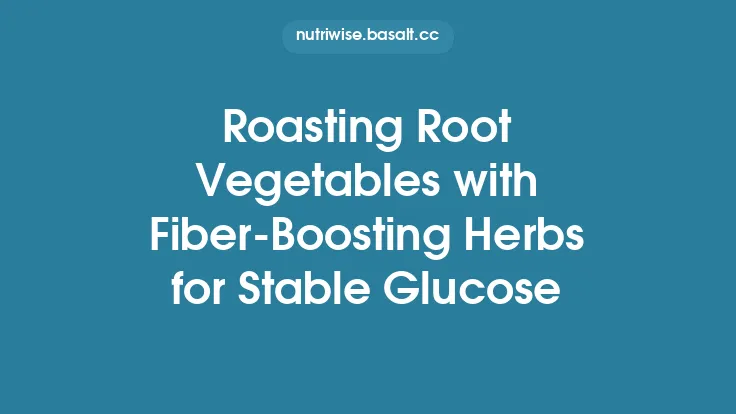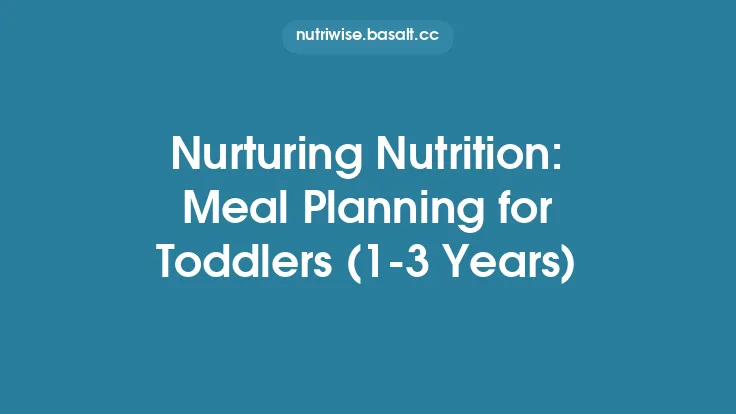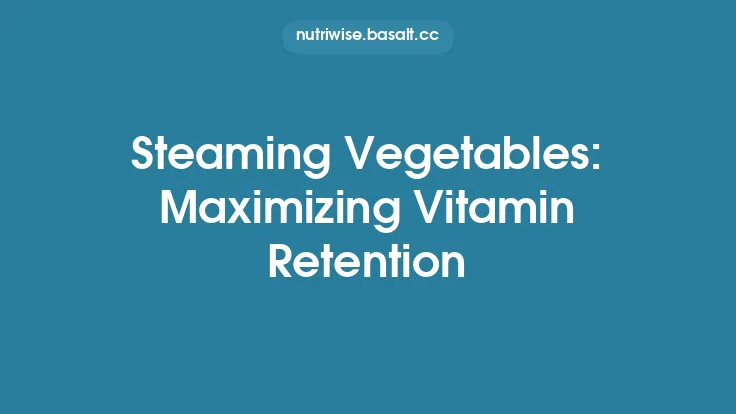Steaming vegetables is one of the simplest, most reliable ways to prepare a meal that supports stable blood‑sugar levels. By cooking vegetables with moist heat rather than oil or high‑temperature dry heat, you preserve the natural fiber matrix, retain water‑soluble nutrients, and avoid the formation of compounds that can accelerate carbohydrate digestion. This makes steaming an ideal technique for anyone looking to keep post‑meal glucose excursions modest while still enjoying a colorful, nutrient‑dense plate.
Why Steaming Is Glycemic‑Friendly
Fiber Preservation
The insoluble fiber that gives vegetables their structural integrity is largely resistant to breakdown during gentle steaming. This fiber slows gastric emptying and creates a physical barrier that limits the rapid exposure of starches to digestive enzymes, thereby flattening the glycemic curve.
Minimal Oxidative Damage
High‑temperature methods such as roasting or grilling can trigger the Maillard reaction, producing advanced glycation end‑products (AGEs) that have been linked to insulin resistance. Steaming keeps temperatures below 100 °C (212 °F), dramatically reducing AGE formation.
Retention of Water‑Soluble Vitamins
Vitamin C, B‑complex vitamins, and certain phytonutrients are highly sensitive to heat and leaching. Because steaming uses only the vapor that condenses on the food surface, these nutrients remain largely intact, supporting overall metabolic health and the body’s ability to regulate glucose.
Low Energy Density
Steamed vegetables retain a high water content without added fats, resulting in a low calorie‑per‑gram profile. This helps maintain satiety without contributing excess calories that could indirectly affect insulin sensitivity.
Choosing the Right Vegetables
Not all vegetables impact blood sugar equally. While most non‑starchy vegetables have a negligible glycemic load, some contain modest amounts of digestible carbohydrates that can still influence glucose levels when consumed in large portions.
| Category | Examples | Approx. Net Carbs (g per 100 g) | Glycemic Impact |
|---|---|---|---|
| Leafy greens | Spinach, kale, Swiss chard | 1–2 | Very low |
| Cruciferous | Broccoli, cauliflower, Brussels sprouts | 2–4 | Low |
| Root (non‑starchy) | Carrots, beets (moderate portion) | 5–7 | Moderate |
| Starchy (use sparingly) | Sweet potatoes, corn | 12–15 | Higher, but still manageable when steamed and portion‑controlled |
For a glycemic‑friendly meal, prioritize leafy greens and cruciferous vegetables, supplementing with modest amounts of lower‑glycemic root vegetables for variety and flavor.
Preparing Vegetables for Steaming
- Wash Thoroughly – Rinse under running water to remove soil and any pesticide residues. A brief soak in a solution of water and a splash of vinegar can help dislodge stubborn particles.
- Trim Uniformly – Cut vegetables into similarly sized pieces to ensure even cooking. For example, slice carrots into ¼‑inch rounds and break broccoli into florets of comparable size.
- Blanch When Needed – Some tougher vegetables (e.g., carrots, beets) benefit from a quick 1‑minute blanch in boiling water before steaming. This softens the exterior, allowing the steam to penetrate more uniformly without overcooking the interior.
- Pat Dry – Excess surface moisture can create steam pockets that lead to uneven cooking. Gently pat the pieces with a clean kitchen towel.
The Steaming Process: Step‑by‑Step
| Step | Action | Details |
|---|---|---|
| 1 | Select Equipment | Use a stainless‑steel steamer basket, a bamboo steamer, or an electric steamer. Ensure the pot or appliance has a tight‑fitting lid to trap steam. |
| 2 | Add Water | Fill the pot with 1–2 inches of water—just enough to generate steam without touching the basket. |
| 3 | Heat to Simmer | Bring water to a gentle simmer (≈95 °C). Avoid a rolling boil, which can cause vigorous bubbling that may splash water onto the vegetables. |
| 4 | Arrange Vegetables | Place vegetables in a single layer, avoiding overcrowding. Overlapping pieces can lead to uneven cooking and loss of texture. |
| 5 | Cover and Steam | Seal the lid tightly. Timing varies by vegetable type and cut size (see timing chart below). |
| 6 | Check Doneness | Insert a thin knife or fork; the vegetable should be tender but still retain a slight crunch (al‑dente). |
| 7 | Remove Promptly | Transfer vegetables to a serving dish immediately to stop further cooking. |
Approximate Steaming Times (Al‑Dente)
| Vegetable | Cut Size | Time |
|---|---|---|
| Broccoli florets | 1‑2 cm | 4–5 min |
| Cauliflower florets | 1‑2 cm | 5–6 min |
| Green beans | 2‑3 cm | 4–5 min |
| Carrot rounds | ¼‑inch | 6–7 min |
| Spinach leaves | Whole | 2–3 min |
| Sweet potato cubes | 1‑cm | 8–10 min |
Enhancing Glycemic Benefits Without Adding Sugar
Steaming itself adds no calories, but flavor can be enhanced with low‑glycemic, non‑sugar additives:
- Herbs & Aromatics – Fresh dill, parsley, cilantro, or a sprig of rosemary can be placed on top of the vegetables while steaming, infusing subtle aroma without affecting glucose.
- Citrus Zest – A thin strip of lemon or lime zest adds brightness and a small amount of soluble fiber.
- Spices – Ground cumin, smoked paprika, or a pinch of turmeric can be sprinkled after steaming for depth of flavor.
- Acidic Touches – A drizzle of a very small amount (≤½ tsp) of apple cider vinegar or a splash of lemon juice can lower the glycemic index of the overall meal by slowing gastric emptying, but keep the quantity modest to avoid altering the article’s scope.
Pairing Steamed Vegetables for a Balanced Meal
A glycemic‑friendly plate typically combines three components: non‑starchy vegetables, a modest portion of protein, and a healthy fat source. Steamed vegetables fit naturally into this framework.
- Protein – Grilled chicken breast, baked tofu, or a poached egg provide amino acids that stimulate insulin secretion in a controlled manner, helping glucose to be taken up by cells efficiently.
- Healthy Fats – A teaspoon of extra‑virgin olive oil, a few slices of avocado, or a sprinkle of toasted nuts (e.g., almonds, walnuts) add monounsaturated fats that further blunt post‑prandial glucose spikes.
- Complex Carbohydrate (Optional) – If a carbohydrate source is desired, pair the steamed vegetables with a small serving (½ cup cooked) of quinoa, barley, or a legume that has been prepared using a method that preserves resistant starch (e.g., cooling after cooking). This maintains the overall low glycemic load.
Storage and Reheating
Steamed vegetables retain their glycemic benefits when stored and reheated correctly.
- Cooling – Cool the vegetables rapidly (within 2 hours) and transfer to airtight containers. Rapid cooling helps preserve texture and prevents bacterial growth.
- Refrigeration – Store at 4 °C (39 °F) for up to 3 days. Over‑time, some starches may retrograde, forming resistant starch, which can further lower the glycemic impact.
- Reheating – Re‑steam gently for 2–3 minutes or microwave in a covered dish with a splash of water (cover with a vented lid). Avoid high‑heat microwaving that can cause uneven heating and degrade heat‑sensitive nutrients.
Common Pitfalls and How to Avoid Them
| Pitfall | Consequence | Solution |
|---|---|---|
| Over‑steaming | Loss of crisp texture, breakdown of fiber, higher glycemic response | Use a timer, check doneness early, remove promptly |
| Adding sugary sauces after steaming | Increases glycemic load dramatically | Opt for herb‑based dressings, a dash of vinegar, or a thin drizzle of oil |
| Crowding the steamer basket | Uneven cooking, some pieces become mushy while others stay raw | Arrange in a single layer, steam in batches if necessary |
| Using a pot with too much water | Water may boil vigorously, causing splashing and loss of nutrients | Keep water level just below the basket; use a pot with a snug lid |
Frequently Asked Questions
Q: Does steaming destroy all nutrients?
A: No. Steaming is one of the most nutrient‑preserving cooking methods, especially for water‑soluble vitamins and phytonutrients. The brief exposure to heat and the lack of leaching into cooking water keep nutrient loss minimal.
Q: Can I steam frozen vegetables?
A: Yes. Frozen vegetables are typically blanched before freezing, which partially cooks them. Steam them for 3–5 minutes, checking for tenderness. This method still offers a low glycemic impact.
Q: How does steaming affect resistant starch?
A: Steaming gelatinizes starches, making them more digestible. However, if the steamed vegetables are cooled (e.g., in a salad), some starch retrogrades into resistant starch, which can actually lower the glycemic response when consumed later.
Q: Is it okay to add a pinch of salt?
A: A small amount of salt (≤¼ tsp) can enhance flavor without affecting blood sugar. For those monitoring sodium intake, consider using potassium‑rich salt substitutes or herbs instead.
Summary
Steaming vegetables aligns perfectly with the goals of glycemic‑friendly cooking: it preserves fiber, safeguards heat‑sensitive nutrients, avoids the formation of harmful compounds, and maintains a low energy density. By selecting appropriate vegetables, cutting them uniformly, timing the steam precisely, and pairing them with modest protein and healthy fats, you can construct meals that support stable blood‑sugar levels day after day. The technique is straightforward, requires minimal equipment, and offers flexibility for both fresh and frozen produce, making it an evergreen cornerstone of health‑focused culinary practice.





